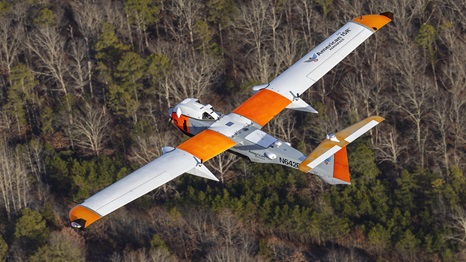our operations
sensor network is changing the way methane is detected
2 min read | may 09, 2023
In the Permian Basin, Chevron is using a sensor network to identify methane leaks through its participation in Project Astra.
An initiative being piloted in Texas is aiming to detect methane leaks faster.
Project Astra, led by the University of Texas (UT), is testing and evaluating a mesh sensor network in the Permian Basin. It leverages advances in methane sensing technologies, data sharing and data analytics to provide near-continuous monitoring of methane emissions across wide areas with multiple operators.
The project recently received $4 million in Department of Energy Funding and an additional $4 million in other funding to expand, improve and document its existing network.
our role
Chevron is one of three oil and gas companies participating in the initiative. The end goal is for producers to develop their organizational capabilities and find and fix significant methane releases quickly and effectively.
In late March, we installed our continuous methane monitors as part of a six-month pilot with UT to test a network of sensors. We have installed additional sensors since then.
“It’s a network that we will be monitoring 24/7,” said Munkhbayar Baasandorj, a Chevron air technology engineer. “If we receive an actionable alert, we will send someone over to identify the leaking component and then do a repair on it.”
team effort
The sensors we use measure methane concentration, wind speed and direction, helping companies pinpoint the exact source of the leak.
Technology is just one component of the project—the other is the level of internal and external collaboration that goes into making it work.
In weekly calls with project leaders at UT, Chevron shares and receives updates about the project and sensor performance. We also schedule data review calls to assess and analyze findings in greater detail.
UT provides insights through its digital tool that simulates expected emissions to optimize the design of the sensor network and data analytics.
“The partnership is very valuable because they have a different set of resources and an analytics tool that we otherwise would not have access to,” Baasandorj said. “We can, in turn, be helpful with the root cause analysis and mitigation. It has been helpful to collaborate with them and learn as we go.”
munkhbayar baasandorj
chevron air technology engineer
detecting progress
Baasandorj, who holds a doctorate in atmospheric chemistry, said initiatives such as Project Astra are moving methane detection to mitigation and prevention.
“Detection is one thing, but it’s not going to do anything on its own,” she said. “You need coherent teams to interpret the data, follow up with an investigation to find the component that’s leaking and then repair it. It is a several step process, and it involves many people and many different teams.”
topics covered
related content
chevron email updates
Subscribe to our newsletter to receive news and updates.







